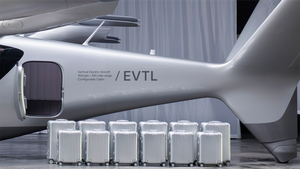
Building envelope solutions provider Carlisle Companies (NYSE: CSL) missed Wall Street’s revenue expectations in Q2 CY2025, with sales flat year on year at $1.45 billion. Its non-GAAP profit of $6.27 per share was 5.4% below analysts’ consensus estimates.
Is now the time to buy Carlisle? Find out by accessing our full research report, it’s free.
Carlisle (CSL) Q2 CY2025 Highlights:
- Revenue: $1.45 billion vs analyst estimates of $1.50 billion (flat year on year, 3.2% miss)
- Adjusted EPS: $6.27 vs analyst expectations of $6.63 (5.4% miss)
- Adjusted EBITDA: $389.3 million vs analyst estimates of $421.2 million (26.9% margin, 7.6% miss)
- Operating Margin: 23.1%, down from 26% in the same quarter last year
- Free Cash Flow Margin: 18%, up from 10.7% in the same quarter last year
- Organic Revenue fell 2.9% year on year (9% in the same quarter last year)
- Market Capitalization: $18.31 billion
Company Overview
Originally founded as Carlisle Tire and Rubber Company, Carlisle Companies (NYSE: CSL) is a multi-industry product manufacturer focusing on construction materials and weatherproofing technologies.
Revenue Growth
Reviewing a company’s long-term sales performance reveals insights into its quality. Any business can put up a good quarter or two, but the best consistently grow over the long haul. Regrettably, Carlisle’s sales grew at a sluggish 2.2% compounded annual growth rate over the last five years. This was below our standards and is a tough starting point for our analysis.
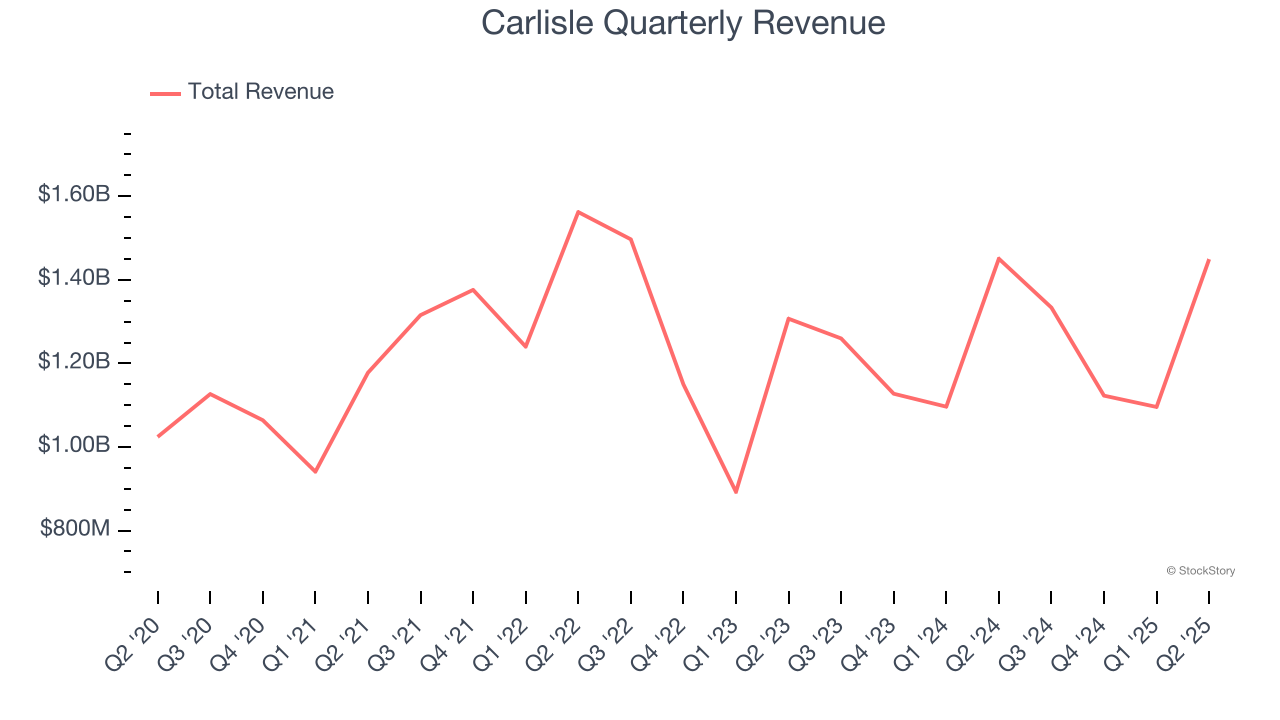
We at StockStory place the most emphasis on long-term growth, but within industrials, a half-decade historical view may miss cycles, industry trends, or a company capitalizing on catalysts such as a new contract win or a successful product line. Carlisle’s annualized revenue growth of 1.6% over the last two years aligns with its five-year trend, suggesting its demand was consistently weak. 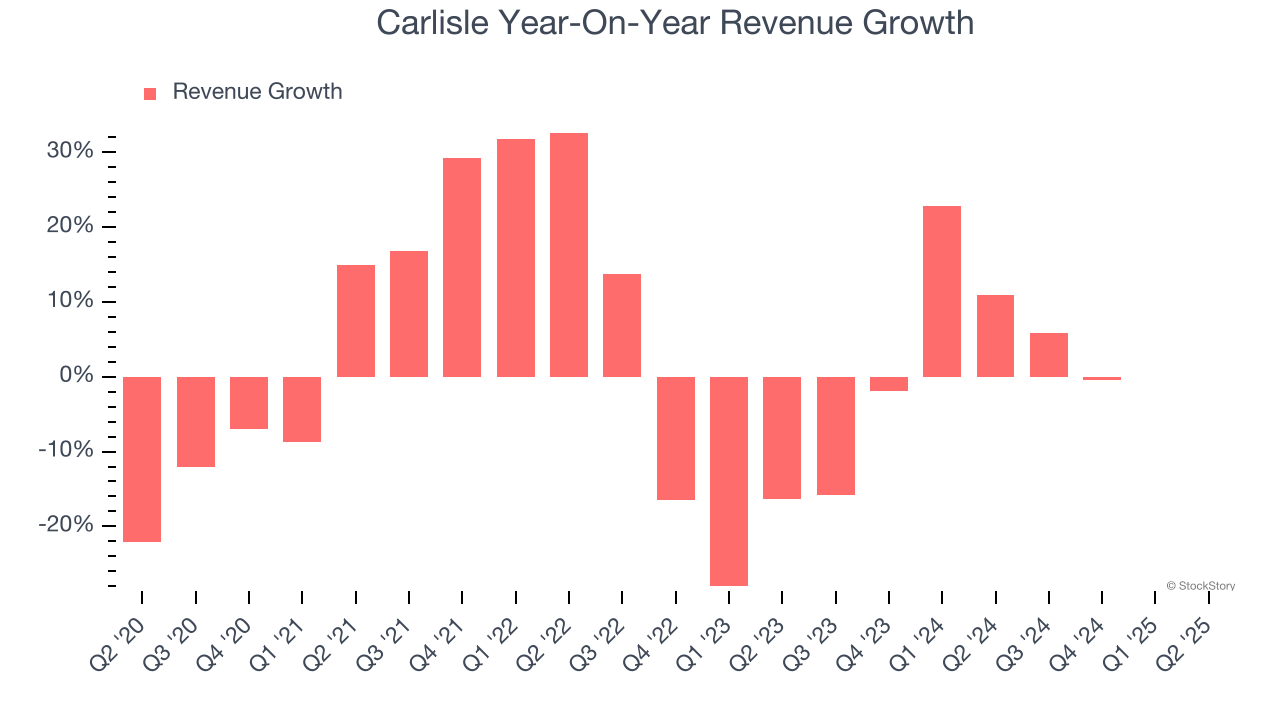
Carlisle also reports organic revenue, which strips out one-time events like acquisitions and currency fluctuations that don’t accurately reflect its fundamentals. Over the last two years, Carlisle’s organic revenue was flat. Because this number aligns with its two-year revenue growth, we can see the company’s core operations (not acquisitions and divestitures) drove most of its results. 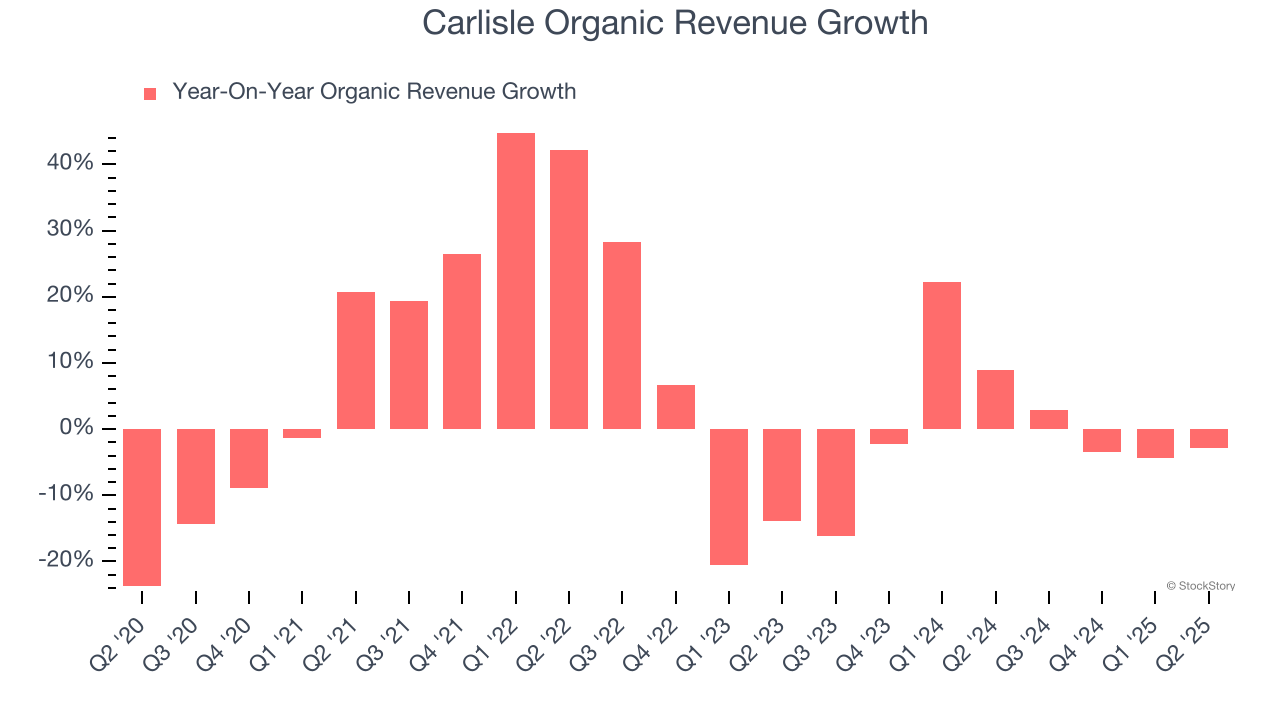
This quarter, Carlisle missed Wall Street’s estimates and reported a rather uninspiring 0.1% year-on-year revenue decline, generating $1.45 billion of revenue.
Looking ahead, sell-side analysts expect revenue to grow 6.4% over the next 12 months. Although this projection suggests its newer products and services will catalyze better top-line performance, it is still below the sector average.
Software is eating the world and there is virtually no industry left that has been untouched by it. That drives increasing demand for tools helping software developers do their jobs, whether it be monitoring critical cloud infrastructure, integrating audio and video functionality, or ensuring smooth content streaming. Click here to access a free report on our 3 favorite stocks to play this generational megatrend.
Operating Margin
Carlisle has been a well-oiled machine over the last five years. It demonstrated elite profitability for an industrials business, boasting an average operating margin of 19.1%. This result isn’t too surprising as its gross margin gives it a favorable starting point.
Analyzing the trend in its profitability, Carlisle’s operating margin rose by 9.9 percentage points over the last five years, as its sales growth gave it operating leverage.
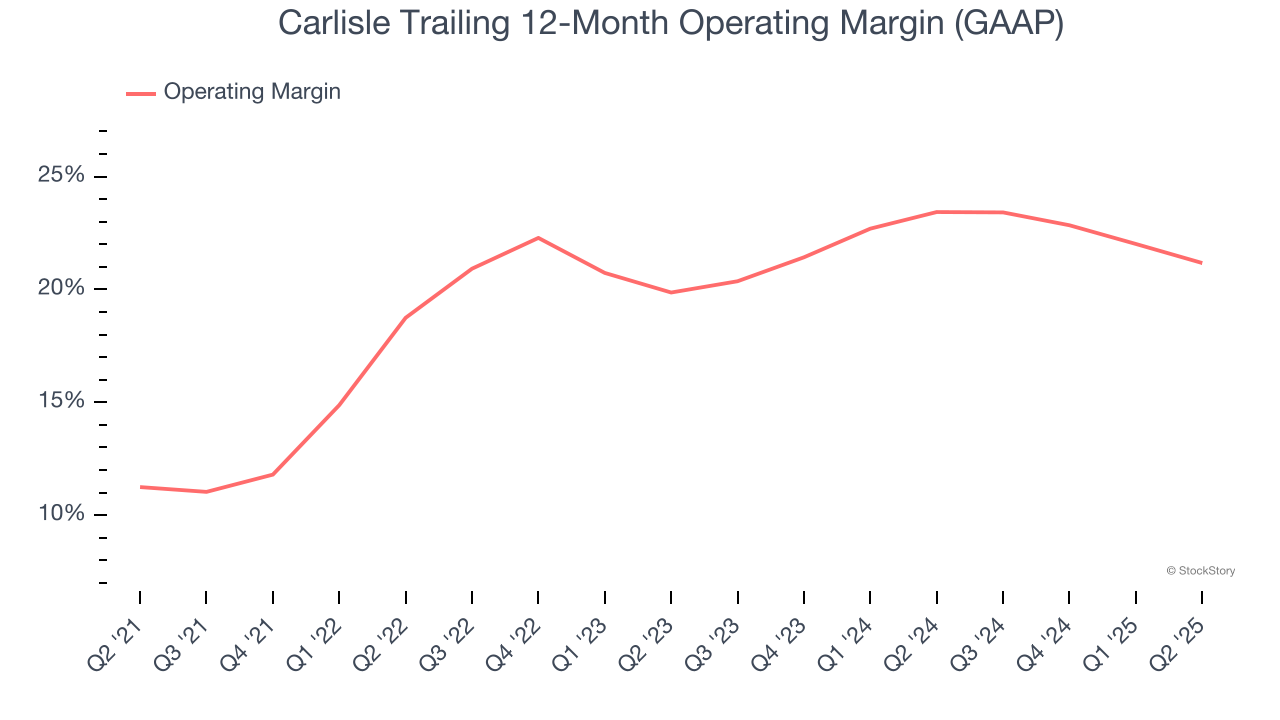
In Q2, Carlisle generated an operating margin profit margin of 23.1%, down 2.9 percentage points year on year. Since Carlisle’s operating margin decreased more than its gross margin, we can assume it was less efficient because expenses such as marketing, R&D, and administrative overhead increased.
Earnings Per Share
Revenue trends explain a company’s historical growth, but the long-term change in earnings per share (EPS) points to the profitability of that growth – for example, a company could inflate its sales through excessive spending on advertising and promotions.
Carlisle’s EPS grew at an astounding 23% compounded annual growth rate over the last five years, higher than its 2.2% annualized revenue growth. This tells us the company became more profitable on a per-share basis as it expanded.
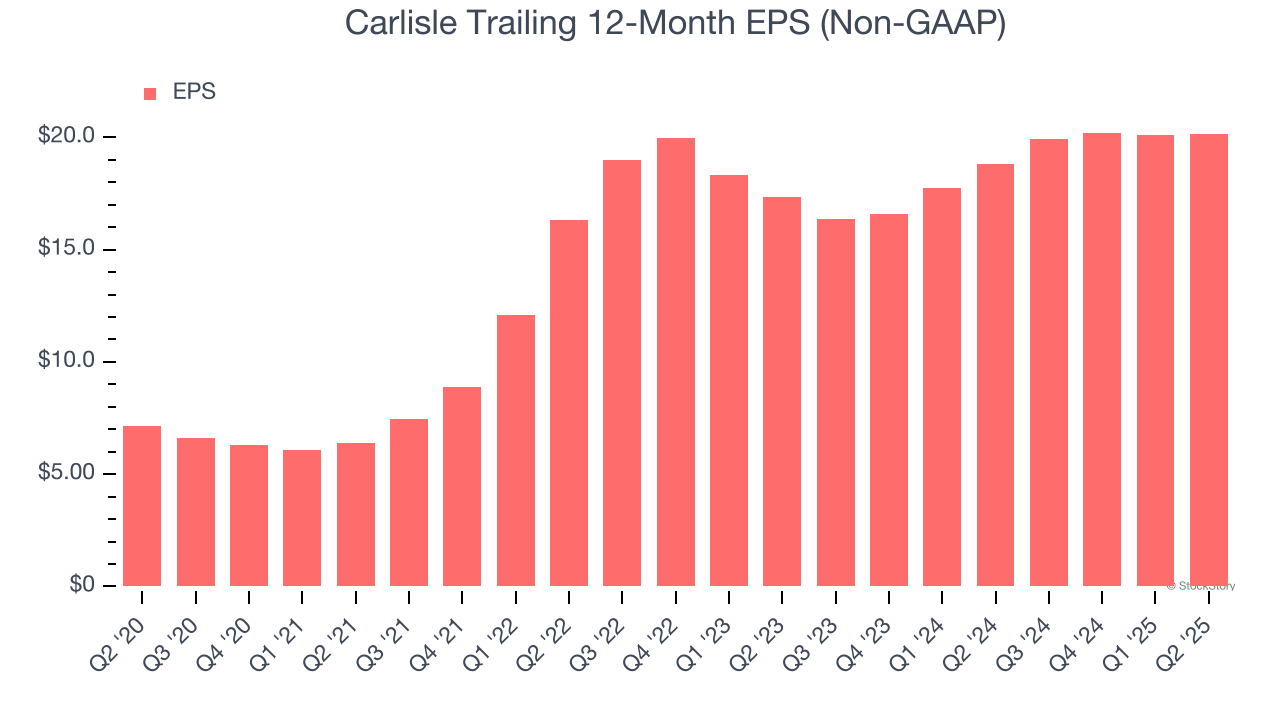
Diving into Carlisle’s quality of earnings can give us a better understanding of its performance. As we mentioned earlier, Carlisle’s operating margin declined this quarter but expanded by 9.9 percentage points over the last five years. Its share count also shrank by 21.4%, and these factors together are positive signs for shareholders because improving profitability and share buybacks turbocharge EPS growth relative to revenue growth. 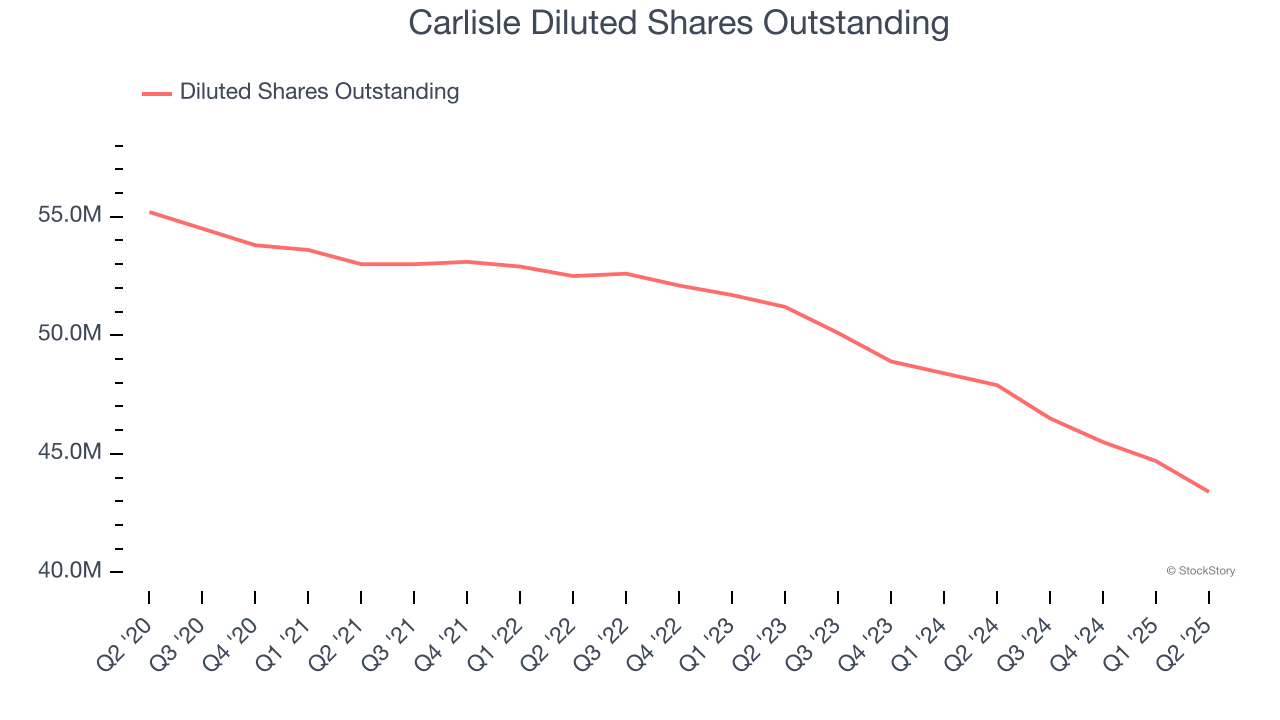
Like with revenue, we analyze EPS over a more recent period because it can provide insight into an emerging theme or development for the business.
For Carlisle, its two-year annual EPS growth of 7.8% was lower than its five-year trend. We hope its growth can accelerate in the future.
In Q2, Carlisle reported adjusted EPS at $6.27, up from $6.24 in the same quarter last year. Despite growing year on year, this print missed analysts’ estimates, but we care more about long-term adjusted EPS growth than short-term movements. Over the next 12 months, Wall Street expects Carlisle’s full-year EPS of $20.13 to grow 16.8%.
Key Takeaways from Carlisle’s Q2 Results
We struggled to find many positives in these results as its revenue, EPS, and EBITDA fell short of Wall Street’s estimates. Overall, this quarter could have been better. The stock traded down 6.6% to $382 immediately after reporting.
Carlisle may have had a tough quarter, but does that actually create an opportunity to invest right now? What happened in the latest quarter matters, but not as much as longer-term business quality and valuation, when deciding whether to invest in this stock. We cover that in our actionable full research report which you can read here, it’s free.






